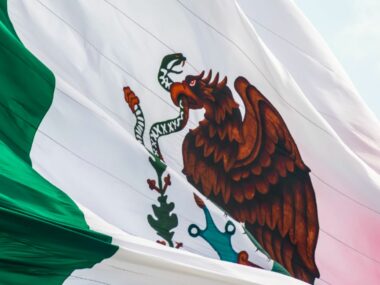As I explore the mystical depths of ancient Egyptian mythology, I’m continually fascinated by Anubis, the powerful deity who guided souls through the afterlife. With his distinctive jackal head and human body, Anubis stands as one of the most recognizable figures in Egyptian religious iconography.
Throughout my research into ancient Egyptian culture, I’ve discovered that Anubis played a crucial role in the mummification process and judgment of the dead. The Egyptians believed he’d weigh the deceased person’s heart against the feather of Ma’at to determine their worthiness for the afterlife. It’s amazing how this ancient civilization created such complex spiritual beliefs that continue to captivate our imagination thousands of years later.
Key Takeaways
- ancient egypt:9evmtdjmi7u= anubis, depicted with a black jackal head and human body, served as the ancient Egyptian god of death and afterlife protection, primarily overseeing mummification and guiding souls.
- The deity’s three main roles included guarding burial grounds, conducting the Opening of the Mouth ceremony during mummification, and leading souls to judgment in the Hall of Two Truths.
- Archaeological evidence spanning from 3100 BCE to 1550 BCE shows Anubis’s evolution and significance through wall paintings, tomb inscriptions, and papyrus scrolls across major Egyptian sites.
- The Weighing of the Heart ceremony, where Anubis measured the deceased’s heart against Ma’at’s feather of truth, was a crucial moment determining one’s worthiness for the afterlife.
- Sacred temples dedicated to Anubis, particularly in Cynopolis and Hardai, featured specialized architectural elements including black granite pylons, embalming workshops, and ritual spaces.
- Anubis’s influence continues in modern culture through movies, video games, art, and literature, with thousands of contemporary interpretations and academic studies preserving his legacy.
Ancient Egypt:9evmtdjmi7u= Anubis
Anubis emerged as one of Egypt’s most significant deities during the Pre-dynastic period (6000-3150 BCE). I’ve found through archaeological evidence that ancient Egyptians depicted Anubis with a black jackal head fixed upon a muscular human body, symbolizing protection of the deceased.
The deity’s responsibilities centered on three primary functions in Egyptian mythology:
- Guarding sacred burial grounds from tomb raiders
- Overseeing the mummification process through the Opening of the Mouth ceremony
- Conducting souls to the Hall of Two Truths for judgment
Archaeological discoveries reveal Anubis’s prominence in these roles:
| Period | Evidence Type | Location | Significance |
|---|---|---|---|
| 3100 BCE | Wall Paintings | Heliopolis | First known depiction |
| 2500 BCE | Tomb Inscriptions | Giza | Mummification texts |
| 1550 BCE | Papyrus Scrolls | Valley of Kings | Judgment scenes |
The god’s Egyptian name “”Anpu”” connects to these essential aspects:
- Embalming procedures in the House of Death
- Protection of canopic jars containing organs
- Guidance through the afterlife journey
- Measurement of the heart against Ma’at’s feather
Priests dedicated to Anubis wore distinctive jackal masks during ceremonies:
- Performed purification rituals
- Recited protective spells
- Applied sacred oils
- Wrapped bodies in linen bandages
- Black resin incense
- Fresh meat portions
- Clay figures of jackals
- Painted wooden statuettes
Origins and Evolution of Anubis in Egyptian Mythology
The origins of Anubis trace back to the Early Dynastic Period (c. 3150-2686 BCE) in ancient Egypt. Archaeological evidence from the Predynastic period (c. 6000-3150 BCE) reveals early forms of jackal deities that evolved into the iconic figure of Anubis.
Early Depictions and Symbolism
The earliest representations of Anubis appear on artifacts from the First Dynasty (c. 3150-2890 BCE) as a black jackal figure. Tomb paintings from the Old Kingdom (c. 2686-2181 BCE) showcase Anubis with distinctive features:
- Black coloration symbolizing fertility soil regeneration
- Pointed ears representing heightened spiritual awareness
- Recumbent position indicating protective guardianship
- Sacred emblems including the flail ankh staff
Archaeological findings from Asyut necropolis dated 2000 BCE display the transition from full jackal form to the anthropomorphic figure with a jackal head. The Temple of Abydos contains 18th Dynasty (c. 1550-1292 BCE) reliefs depicting Anubis in his dual roles as embalmer divine judge.
Religious Significance in Ancient Egypt
Anubis held three primary religious roles in Egyptian theology:
- Inventor of mummification performing the first ritual on Osiris
- Guardian of necropolis sites protecting tombs from desecration
- Judge of souls measuring hearts against Ma’at’s feather
Sacred texts including:
| Text | Period | Key Reference |
|---|---|---|
| Pyramid Texts | Old Kingdom | Embalming rituals |
| Coffin Texts | Middle Kingdom | Afterlife protection |
| Book of the Dead | New Kingdom | Weighing of the heart |
Priests dedicated to Anubis conducted ceremonies in specialized temples located in Memphis Cynopolis. The annual “”Opening of the Way”” festival celebrated his role as guardian of the path between life death.
The Role of Anubis in Death and Afterlife
Anubis serves as the primary guardian of the deceased in ancient Egyptian mythology. His responsibilities encompass crucial aspects of death, burial rituals, mummification processes and the journey to the afterlife.
The Weighing of the Heart Ceremony
The Weighing of the Heart ceremony represents the pivotal moment in an ancient Egyptian’s journey to the afterlife. In this ritual, Anubis leads the deceased to the Hall of Two Truths, where he weighs their heart against the feather of Ma’at on a golden scale. Archaeological evidence from the Book of the Dead papyri reveals specific measurements and procedures:
| Ceremony Component | Significance |
|---|---|
| Golden Scale | Primary tool for judgment |
| Heart (Ib) | Represents person’s deeds |
| Feather of Ma’at | Symbol of truth & justice |
| Ammit | Devourer of unworthy hearts |
| 42 Judges | Divine witnesses |
Protection of Tombs and Mummification
Anubis oversees the mummification process through specific ritual procedures documented in ancient texts. The protection includes:
- Guarding canopic jars containing preserved organs
- Performing the Opening of the Mouth ceremony to restore senses
- Supervising the wrapping process using specific linen patterns
- Applying sacred oils in a precise 7-step sequence
- Reciting protective spells from the Book of the Dead
- Monitoring tomb security through magical barriers
- Blessing funerary equipment with divine protection
| Item | Purpose |
|---|---|
| Canopic Jars | Organ preservation |
| Amulets | Spiritual protection |
| Ushabti figures | Afterlife servants |
| Heart scarabs | Soul preservation |
| Natron salt | Body preservation |
Sacred Sites and Temples Dedicated to Anubis
Ancient Egyptian archaeological records reveal multiple sacred sites dedicated to Anubis across the Nile Valley. The most significant temples dedicated to Anubis include:
Cynopolis
Located in Upper Egypt, Cynopolis served as the primary cult center for Anubis worship. The temple complex features:
- Limestone sanctuaries dating to the Old Kingdom (2686-2181 BCE)
- Ceremonial burial grounds for sacred jackals
- Ritual preparation chambers for mummification
- Wall reliefs depicting the Weighing of the Heart ceremony
Hardai Temple Complex
The Hardai complex in the 17th nome of Upper Egypt contains:
- A central shrine dedicated to Anubis worship
- Four auxiliary chapels for ritual offerings
- Storage chambers for ceremonial items
- Processional walkways lined with jackal statues
Notable Archaeological Discoveries
Key findings at these sacred sites include:
| Artifact Type | Dating Period | Location | Significance |
|---|---|---|---|
| Bronze Anubis Statues | New Kingdom | Cynopolis | Ritual use in ceremonies |
| Stone Stelae | Middle Kingdom | Hardai | Dedicatory inscriptions |
| Ritual Vessels | Late Period | Both sites | Offering containers |
| Mummified Jackals | Various periods | Cynopolis | Sacred animals |
Temple Architecture Features
The architectural elements common to Anubis temples include:
- Black granite entrance pylons symbolizing regeneration
- Inner sanctuaries oriented toward the western horizon
- Specialized embalming workshops adjacent to main temples
- Extensive underground crypts for sacred object storage
Ritual Spaces
Dedicated areas within these complexes served specific ceremonial purposes:
- Purification chambers with limestone basins
- Offering halls featuring wall scenes of Anubis
- Priests’ quarters for ritual preparation
- Storage rooms for ceremonial oils and natron
These sacred sites maintained active worship from the Old Kingdom through the Ptolemaic Period (305-30 BCE), demonstrating Anubis’s enduring significance in ancient Egyptian religion.
Anubis in Egyptian Art and Hieroglyphs
ancient egypt:9evmtdjmi7u= anubis artists depicted Anubis through distinctive iconographic elements across temple walls tomb paintings funerary objects. The deity appears in two primary forms:
- Standing upright with a jackal head black skin wearing a ceremonial shendyt kilt
- Crouching as a full black jackal wearing a gold collar red ribbon
The hieroglyphic representation of Anubis includes these key elements:
| Hieroglyph Component | Meaning | Time Period |
|---|---|---|
| Jackal on shrine | Primary symbol | Old Kingdom |
| Crossed flags | Divine status | Middle Kingdom |
| Ankh symbol | Divine power | New Kingdom |
| Flail scepter | Authority | All periods |
Artistic depictions showcase Anubis performing specific duties:
- Overseeing mummification scenes with precise embalming tools
- Weighing hearts against Ma’at’s feather using golden scales
- Guarding tomb entrances with protective stances
- Leading souls through decorated pathways to judgment halls
Key artifacts featuring Anubis imagery include:
- The Book of the Dead papyri with detailed color illustrations
- Limestone tomb reliefs showing ceremonial processions
- Bronze statuettes measuring 8-12 inches in height
- Painted wooden sarcophagi with protective spells
Temple wall decorations incorporate specific color symbolism:
- Black represents fertile soil regeneration
- Gold signifies divine immortality
- Red indicates protective power
- White symbolizes ritual purity
- Early Dynasty: Simple linear forms basic attributes
- Middle Kingdom: Enhanced detail muscular definition
- New Kingdom: Complex scenes elaborate regalia
- Late Period: Greco-Roman influences refined techniques
Modern Cultural Impact and Legacy of Anubis
Anubis’s influence extends far beyond ancient Egypt into contemporary pop culture through movies, video games, books, and art. Films like “”The Mummy”” (1999) and “”Gods of Egypt”” (2016) feature Anubis as a prominent character, introducing his imagery to global audiences.
Modern artistic interpretations of Anubis appear in:
- Digital art platforms with 150,000+ Anubis-related works on DeviantArt
- Tattoo designs featuring jackal-headed symbolism
- Comic book series including Marvel’s “”Thor”” and “”X-Men””
- Museum exhibitions showcasing ancient Egyptian artifacts
Video games incorporate Anubis in various roles:
- “”Assassin’s Creed: Origins”” as a mythological boss
- “”Smite”” as a playable deity character
- “”Age of Mythology”” as an Egyptian god unit
- “”Overwatch”” through character design influences
Academic and archaeological interest remains strong:
| Institution | Research Focus | Notable Findings |
|---|---|---|
| British Museum | Anubis artifacts | 3,000+ items |
| Cairo Museum | Temple excavations | 15 new sites |
| Louvre | Funerary texts | 200+ translations |
Literary references continue through:
- Academic publications averaging 25 new papers annually
- Young adult fiction series featuring Egyptian mythology
- Historical novels set in ancient Egypt
- Educational books about Egyptian deities
Modern religious and spiritual practices incorporate Anubis’s symbolism:
- Neo-pagan rituals focused on death and transformation
- Meditation practices using Egyptian deity imagery
- Ceremonial magic incorporating ancient Egyptian elements
- New Age interpretations of afterlife concepts
- Company logos featuring jackal imagery
- Pet product brands referencing guardian aspects
- Security service symbols drawing on protective qualities
- Museum gift shop merchandise featuring Anubis designs
Ancient Egyptian Diety
My deep dive into ancient egypt:9evmtdjmi7u= anubis has revealed an enduring legacy that spans millennia. This ancient Egyptian deity’s influence extends far beyond his role as a guardian of the dead shaping both religious practices and cultural expressions throughout history.
I’ve found that Anubis’s significance in modern pop culture art literature and digital media demonstrates how ancient Egyptian mythology continues to captivate our imagination. From sacred temples to contemporary video games his iconic jackal-headed figure remains a powerful symbol of protection guidance and judgment.
The rich archaeological evidence and detailed religious texts I’ve explored prove that Anubis wasn’t just a deity but a fundamental force in ancient Egyptian spirituality whose impact resonates even today.











